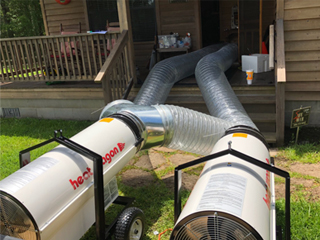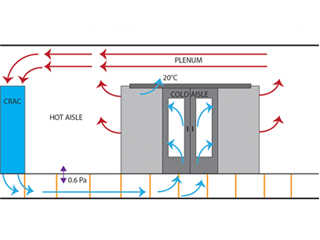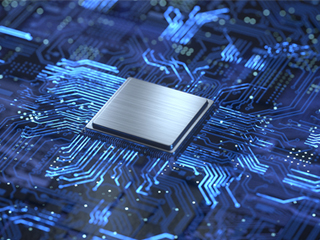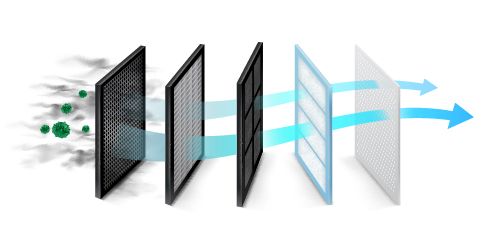
When the Restrictions on Hazardous Substances (RoHS) or lead-free manufacturing regulations came into play, data center companies had high hopes that this would lead to stronger and more efficient electronic equipment. Over time, however, they found that RoHS-compliant datacom and IT equipment were more at risk of corrosion in places of low ambient air quality. Instead of providing reinforced products, this development came with many concerns. One of them was the presence of contaminants. Present in poor air quality, contaminants can damage today’s sensitive IT products.
How Air Contaminants Become a Problem in Data Centers
Data centers are dynamic places. The servers and cooling systems run 24 hours, seven days a week. Personnel clean the spaces at least once a week. Technicians replace old devices, or repair technologies —so that clients can maintain access to their data whenever they need it. This routine comes with a cost. This process can create or bring in contaminants that may endanger computers and other devices in the facility, in ways such as downtime or data center outages.
While some locations have clean air, most data centers are located in places where particle emissions and other contaminants are abundant. Even if the location has good air quality, some contaminants such as dust are present in all types of environments. Although they are not naturally harmful, their buildup overtime might interrupt a data facility.
Contaminants can come from outside or inside of a facility. Outside contaminants include construction dust, pollen, sea salt, and air pollution. They can travel through the air and get in air filters and conditioning systems. Or humans bring them in through their clothing, skin particles, hair, and fibers.
Contaminants can also be born inside the facility, emitted by technologies. They can be particles from Computer Room Air Handler (CRAH) units, packing materials, and floor tiles. Corrosive gases or gaseous contaminants can be created from processes inside or outside of the facility.
Common Air Contaminants to Data Centers
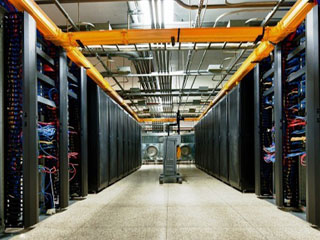
Here are some of the most common contaminants that plague data centers devices and technologies:
Concrete dust – When concrete is unsealed, it has the potential to emit fine dust into the air. These particles consist of matters such as calcium, silica, and others, that have abrasive and corrosive properties. Even if the concrete is sealed, regular monitoring is necessary, otherwise, the seals can break down and particles will begin to disperse.
Ferrous metal particles – They can come from printers, tape drives, worn parts in HVAC units, new floor tiles, conduit pipes, and various mechanical parts. Since they are conductive, they can cause electrical damage to circuit boards, resulting in data center downtime.
Corrosive gases – These are gaseous contaminants such as sulfur dioxide, hydrogen sulfide, nitrogen dioxide, chlorine, ozone, etc. They are the leading cause of silver and copper corrosion, and they may also account for corrosion of delicate metal parts or wiring in modern circuit boards and chips.
Zinc and tin whiskers – Tin whiskers are small metal filaments that grow from electroplated steel floor plates, bars in the ceiling, and other metal components. They are both good conductors of electricity, and because of their conductivity, can lead to short circuits.
Chlorides or salts – Salts in the air are a leading cause of vehicle corrosion and other metal breakages. Data centers near coastal areas must consider airborne salt levels. Data centers in areas of heavy snowfall must also be aware of salt and chemicals used to melt snow on roadways, which may be tracked in by workers.
Electrostatic dust– Dust and lint particles from clothing, cardboard, paper, and other benign particles can become static-charged. When drawn into servers, they can cause faulty commands, data loss, resets, and other problems.
Why Air Contaminants Should Be Given Attention
Today, data centers are one of the most important parts of a company. They run non-stop so people can access their wealth of information. Exposure to contaminants, however, are threatening data centers. These threats create numerous drawbacks.
The most affected part of a company would be its bottom line. Data center equipment and technologies are sophisticated and expensive, that’s why they require intensive maintenance. The presence of a contaminant could shorten what could have been years of an equipment’s lifespan. Not only the computers and servers are at stake, but also maintenance and monitoring technologies. Heating, ventilation, and air conditioning systems (HVAC), temperature sensors, and cleaning devices can also break down due to contaminants’ corrosive properties. The need for constant replacement of expensive materials is not financially healthy and only incurs added expenses.
Broken servers could lead to downtime and data loss. Particle emissions can cause static charges that interfere with servers. Both downtime and loss of data could be compelling reasons for a client to lose trust over a data center company. Frequent inaccessibility to information, and increasing competition among data center companies, makes switching data providers an easy choice. Again, this could be a big blow to the company’s bottom line
Ways to Prevent Data Center Contamination
Prevention is all the more important when dealing with contaminants. Available technologies can filter particulate emissions from outside the facility. Several solutions can offer ways to vacuum and exclude in-house contaminants that are emitted by the computers themselves.
Here are some of the best ways to reduce their presence inside a facility:
- Handlers should immediately uncrate and unpack hardware and equipment outside, before bringing them inside the facilities. All packaging should be left outside. All doors, windows, and wall penetrations must be air-tight sealed.
- HEPA-filtered vacuum cleaners are more efficient in picking up loose dust and materials.
- Professional regulators must monitor air conditions. Deploy personnel that measure the reactivity (corrosion) rates in and out of the data center. They should also measure airflow at the supply and exhaust air grills and at each computer room air conditioning (CRAC) unit.
- Maintain the cleanliness of the floor slab, the ceiling, and the filters of the air conditioning units.
- Establish and regularly update a temperature and humidity profile
Air quality monitoring sensors, such as those provided by AKCP can check the particles in the air and other gas contaminants. Differential air pressure sensors and air velocity sensors can check airflow through ductwork and pressure drops across filters to alert when they require cleaning.
Final Thoughts
For a data center to run smoothly, all parts should perform well. Contaminants can be a threat, but data center companies have options to prevent them from damaging the machinery. From just maintaining the cleanliness of the facility to regularly monitoring air supply, companies can still serve their customers without fail.

